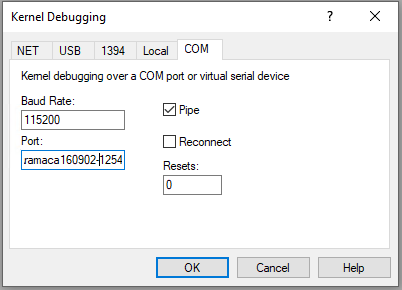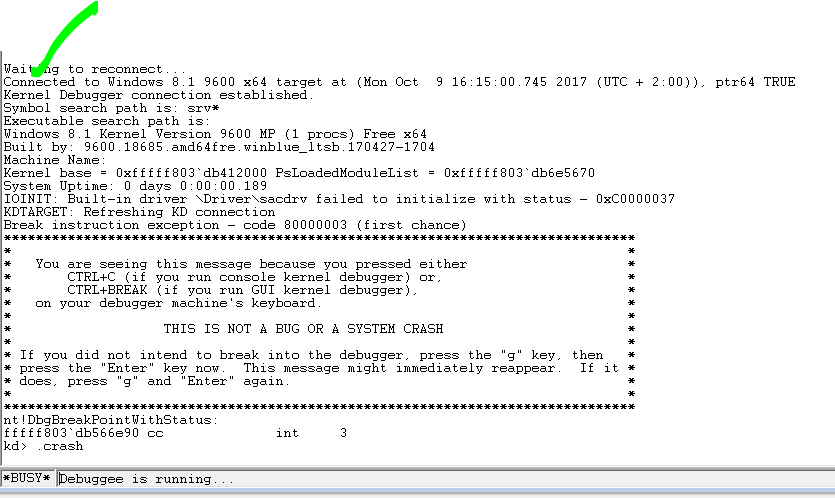Note
Access to this page requires authorization. You can try signing in or changing directories.
Access to this page requires authorization. You can try changing directories.
1) start an elevated command prompt and turn on debugging
bcdedit /debug on
2) configure debugger to use COM1
bcdedit /dbgsettings SERIAL DEBUGPORT:1 BAUDRATE:115200

3) reboot so boot loader can read new bcdstore settings
Now, we need to configure Hyper-V to redirect COM1 to TCP named pipe
1) Hyper-V -> VM settings -> COM1
change from "none" to "pipe name" and provide a descriptive name which we will use later in winbdg
Note: Please take a note of the named pipe path as we will use this later in windbg

- Download and install the Debugging Tools for Windows from https://msdn.microsoft.com/en-us/windows/hardware/gg463009
- Start 'WinDbg' and choose 'Run as administrator' (Windbg needs administrative rights to connect to the pipe)
- In windbg open the File menu and choose 'Remote Stub'
- Here we need 'Remote Stub' path (replace server=HYPERV1 by your Hyper-V hostname)
- tcp:server=HYPERV1,port=10240
- then go to 'Kernel Debug'-> COM
- Enter a Baud Rate of 115200, to match the settings made in the VM and replace HYPERV1 by your Hyper-V hostname a.e.
- \\HYPERV1\pipe\ramaca160902-125416-VM693

- Enter a Baud Rate of 115200, to match the settings made in the VM and replace HYPERV1 by your Hyper-V hostname a.e.
Voila - To verify your debugger connection you can break in which should give you a kd> prompt. From here it's all yours 😊

/en-us/windows-hardware/drivers/debugger/attaching-to-a-virtual-machine--kernel-mode-
https://msdn.microsoft.com/en-us/library/ms932907(v=winembedded.5).aspx